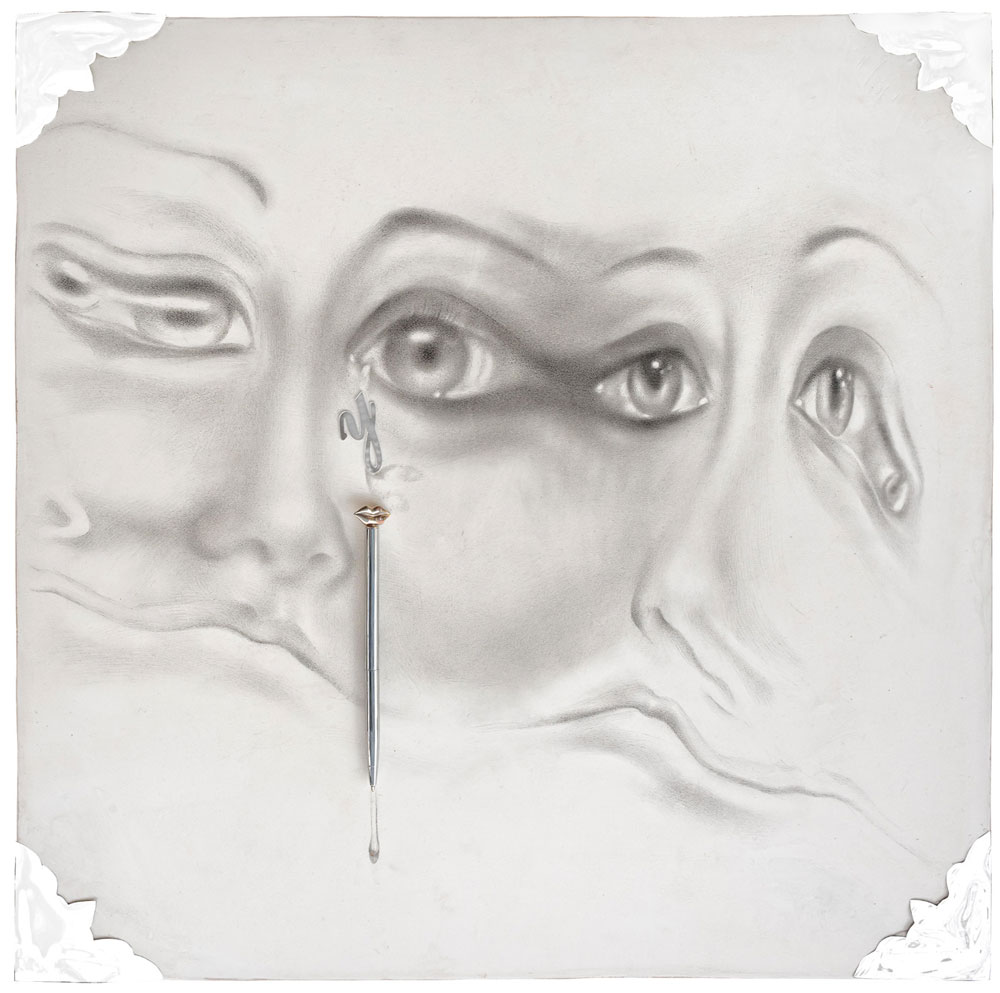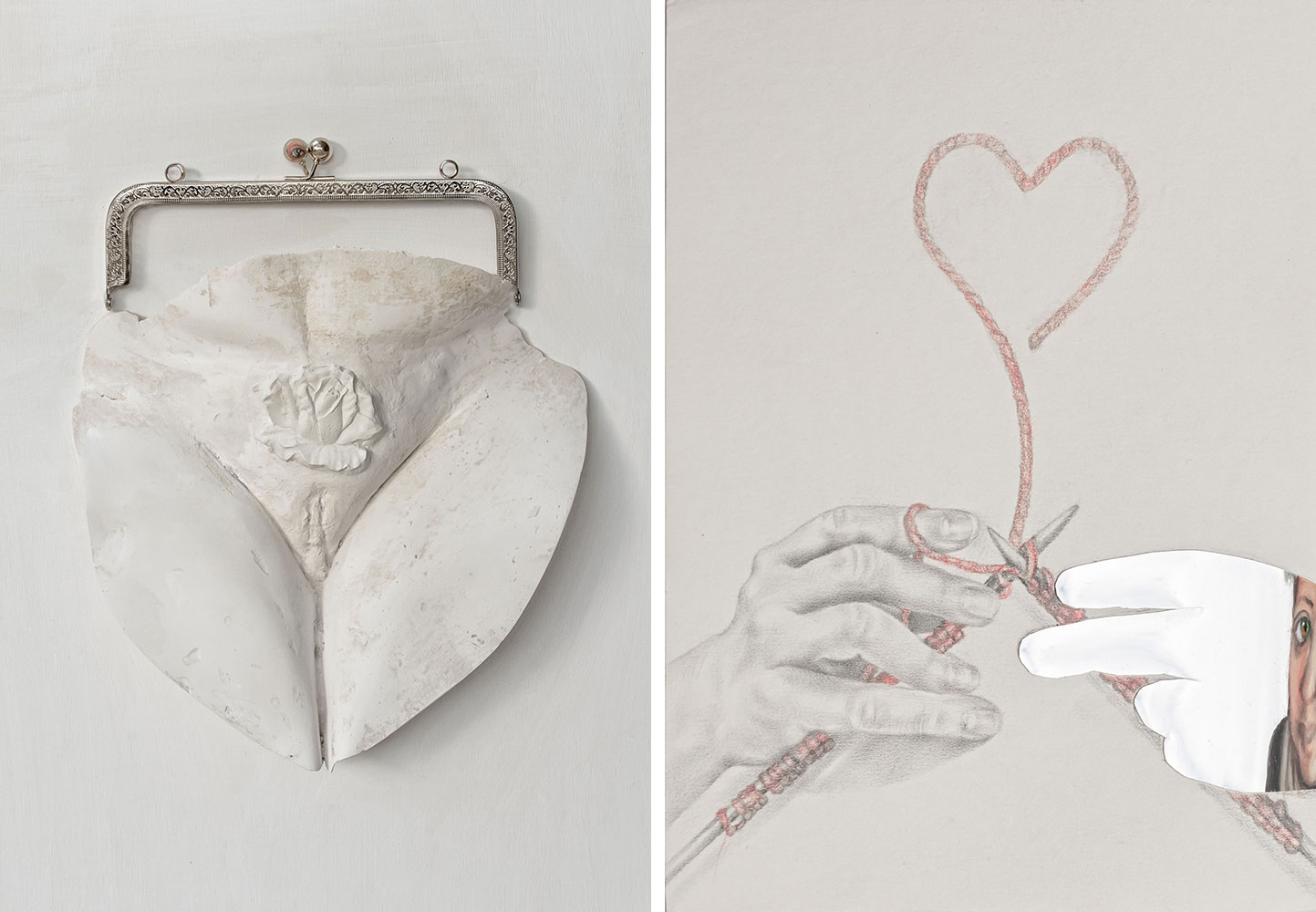INTERVIEW: Lamprini Boviatsou
 Lamprini Boviatsou is one of the most active artists of her generation, while she is using many and different ready-made objects for the needs of her work, either as a whole or incorporated in frames, painting is always at the center of her work and unfolds on many levels, just like in her solo exhibition “The Mitos of Time”, which is the occasion for the discussion between us.
Lamprini Boviatsou is one of the most active artists of her generation, while she is using many and different ready-made objects for the needs of her work, either as a whole or incorporated in frames, painting is always at the center of her work and unfolds on many levels, just like in her solo exhibition “The Mitos of Time”, which is the occasion for the discussion between us.
By Efi Michalarou
Photo: Lamprini Boviatsou’s Archive
Your exhibition’s title is “The Mitos of Time”, unwinding it, through the works that, as we know, most of them are quite recent, how much is revealed to you and how much to the audience?
All the works that I show in the exhibition have been created in the last two years. They are all connected, as they were kicked off by the line of thought and emotions itself. I function subconsciously when I create, letting the mind’s deep underground river gush freely. Acting this way reveals to me things. The audience on the other hand, gives their own interpretation. This interpretation of theirs I believe is indicative and revealing of their inner world and of the situation they are in.
The way you use the red string in your works is very strong, almost shocking… is this choice conscious or subconscious?
My intention was to set in motion strong, sometimes difficult branches of human existence. With the union of the opposites that incur the whole exhibition, such as the red string on top of the white plaster or paper, I believe this has been achieved. Thinking about it now, it can’t have been an unconscious choice.
Painting, Sketching, Objects, Sculpting, many different materials meet and compose a personal narrative. What does the use of multiple means mean to you, in an age of an almost obsessive redefinition of painting, internationally?
Painting is my obsession too. From the years at the Academy of Fine Arts in Rome where I studied and then, in the nineteen nineties, it was bombarded by various experimentations in materials and intangible means, I never abandoned it. I either paint on the sculpture, or the ready-made object, or the fabric, painting is always there, on display or hidden.
The look, the position, your whole work, is clearly feminine, from where they derive all the matters that preoccupy us, all under negotiation, in an age where they should all be resolved.
The matters that occupy me, such as the passing of time, eros and love, unity and loneliness, the dream, euphoria and disappointment, hope and contradiction, tenderness and violence, the proximity and distance of emotions and bodies, I believe occupy mankind regardless of gender or age. As a woman that I am I might see them from my own perspective, which includes a multitude of roles I assume to carry out as well as a motherly, I’d say intensely dative perspective. The matters that occupy the modern woman when they appear in my work, is because as a woman I experience them in my daily life, it is not though my intention to create works only for the feminine matter.
You live and create in Crete – in Chania, what is the position and confrontation of women and what the support and solidarity from the rest?
Chania is a beautiful, multicultural community that is still fighting to shake off its traditional standards. Women can be independent and dynamic, but not too much, the same happens in many much bigger cities. Because never and nowhere in the world has the naturalness of women been appreciated.
In the epicenter of your work – just like Frida Kahlo as Peggy Kounenaki notes in the exhibition’s catalogue – is your figure, self, how big is the distance that separates you from your work and how much are you involved in it?
Frida Kahlo said “I draw myself because I am the person that I know best”. I too, wanting to talk about mankind, I start at my own self with the purpose for my personal experience or emotion to touch the collective, to talk to and to concern the audience. Besides the triptych work art, audience and artist, is what runs through from the very first steps of my work and is approached through reflection. The viewer, while observing my face in the work, goes inside the work, becoming part of it.
The emotions we see in your work, are those that many women possess these days: fatigue, affliction, loneliness, disappointment… what do you wish through the magic mirror of art to happen and they change, so that women rediscover happiness and the lost vitality?
My art is a perpetual attempt at reclaiming a lost paradise. There are all those things that you mentioned in my work but there is also love, eros, passion, gentleness, the mental upliftment that contact gifts. As it seems, these beautiful, the important but difficult, are also the answer to the question.
Download Greek version here.
First Publication: www.dreamideamachine.com
© Interview-Efi Michalarou
Info: Curators: Peggy Kounenaki & Giannis P. Markantonakis, Chania Art Center, 59 A. Papanastasiou Str, Leontariana, Chania, Crete, Greece, Duration: 25/1-28/2/2023



Right: Lamprini Boviatsou, The Shape, 2022, Pencil on paper and oil on mirror sticker, 21 × 15 cm, Photo: Michalis Kalaitzakis, Courtesy the artist and Chania Art Center



